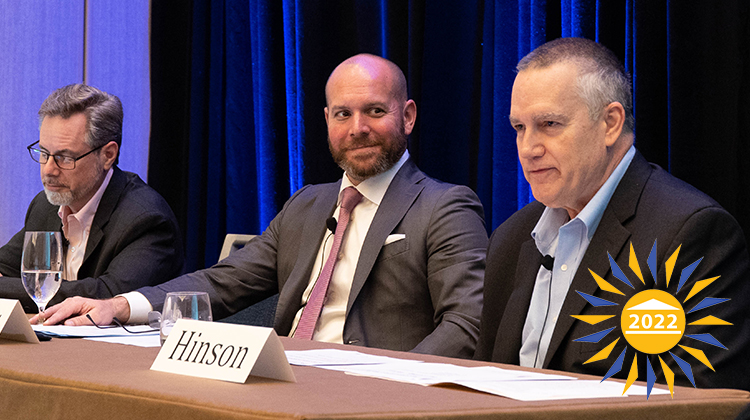Most people in the legacy space have encountered, in one form or another, long tail worker’s compensation claims. Too many of us have lost sleep trying to understand how this business was written in the first place, why it wasn’t set up to manage properly, and what can or should be done to manage and resolve lingering, long tail claims.
Michael Terelmes of Compe Re, Anthony Sambucini of ANS Solutions, and Gary Hinson of AXA XL addressed these questions and more in their presentation on “cradle to grave” Legacy Workers Compensation Management. A replay of the presentation can be found in the AIRROC On Demand library.
Michael began by setting a perspective that workers compensation business is really a people business. Besides the typical perspectives on profitability, legal obligations and obligations to their employees, workers compensation carriers have a social obligation to claimants with whom they share, in some cases, a relationship that lasts for decades.
The presenters discussed three critical phases in the management of legacy workers compensation business.
Pre-acquisition Management: During this phase, companies should conduct due diligence, preparing actuarial, claims and financial analyses to assess payout patterns, claims handling, and ultimately prepare a cash flow analysis to set the appropriate price for the business. To assess a significant cost driver, a pharmacy loss run should be obtained, which lists all prescribed pharmaceuticals for all of the claims. These data can be condensed into one price per claim to see which claims cost the most. Depending upon the claimant and the drug, companies can make changes that save costs. There are three types of medicines: untouchables (which keep patients alive and cannot be changed), “one-offs” or expensive, non-recurring medications like short term antibiotics (which are sporadic), and the impact group which are expensive medications that can be substituted with clinically equal or superior, less costly alternatives. This is particularly important because as workers compensation claims age, pharmaceutical expenses become a larger portion of the exposure.
From a claims perspective, companies should closely evaluate the current TPA by reviewing either a random sample claims or a portion of the largest claims to identify opportunities to resolve them for less, reduce or change reserves, and determine whether the TPA is actively setting them up for settlement. Companies should also review the reinsurance assets to identify reinsurers, and assess if they are pay/slow pay/no pay and will be viable for the long term.
Post-acquisition Management: During this phase (running from approximately day one through the first year), TPA management is important. Companies should continue to assess who will handle the claims, determine whether their contracts should be renegotiated, and specifically design and conduct audits focusing on the largest claims. It is important to determine if TPAs are setting up claims for potential resolution.
Medical management is also important. Make sure that you have a strong provider network and that hospitalization claims (the largest by far) are properly audited. Since most providers don’t know the cost of prescribed medications, companies should identify less expensive, clinically superior drugs; there are many choices to go “off brand.” Since claimants are reluctant to switch medications that are working, companies must actively work to build consensus with doctors and patients about the benefits and cost savings of making the switch.
Long-term Management: This phase is especially important since some workers compensation claims can last 30 to 50 years. Companies should quantify the probable final cost of a claim so they can resolve them for a good value. This can be done in two ways: for claimants with less complicated diagnoses and treatments, use the annual run rate of the medical exposure multiplied by the claimant’s life expectancy. If development of probable medical costs is complicated due to more complex injuries and treatment protocols, companies can apply an adjusted life expectancy table and identify individual cost drivers specific to the particular claim.
Settlement strategies for long tail claims break down into two components: on the indemnity side – essentially the replacement of wages and earning capacity – virtually all of these benefits can be settled. Medical costs, however, are more difficult to settle but should always be evaluated for a reasonable settlement in case the opportunity arises.
Another significant exposure to assess are facility and home care claims. The best way to evaluate these claims is to get an on-site assessment of the level and cost of care. This allows you to determine whether the cost/care ratio is appropriate or if the claimant could be moved to an alternative facility for more appropriate, cost-effective care.
As always, you cannot control certain factors impacting the cost of long tail claims. For example, changes in the applicable statutory or legal framework might drive costs up or down years after the claim was first evaluated. Companies should try to anticipate these changes (if possible) and adjust their cost analysis accordingly. Setting and sticking to a schedule of annual assessments is also important. TPA audits should be tailored to the specific claims involved, focusing on the TPA strategy for settling them. Pharmacy loss runs should also be reviewed annually and compared to the first run to determine how pharmacy costs have changed.
Finally, to ensure that closed claims stay closed and don’t reopen, companies should audit a sample of closed claims in the post-acquisition phase to determine whether the claims have a chance to reopen and why.
